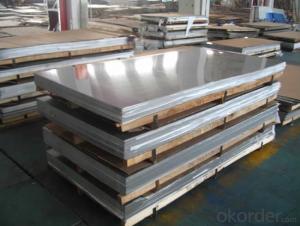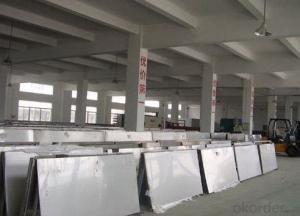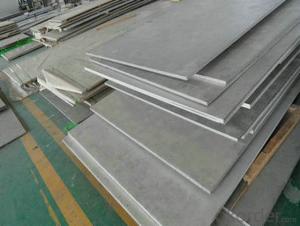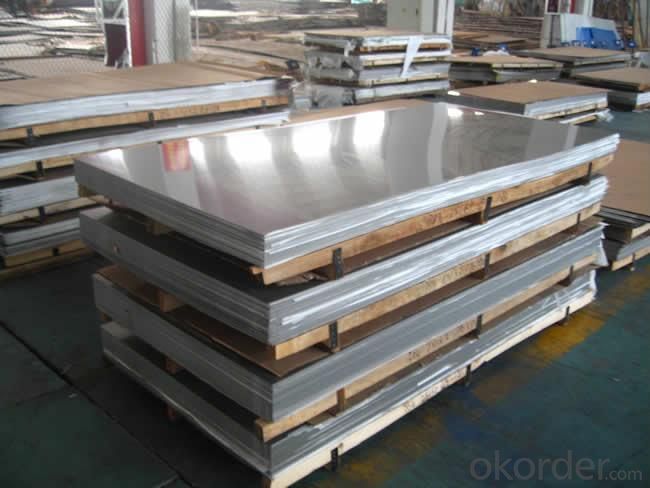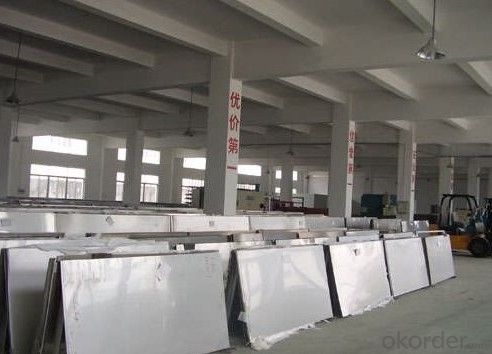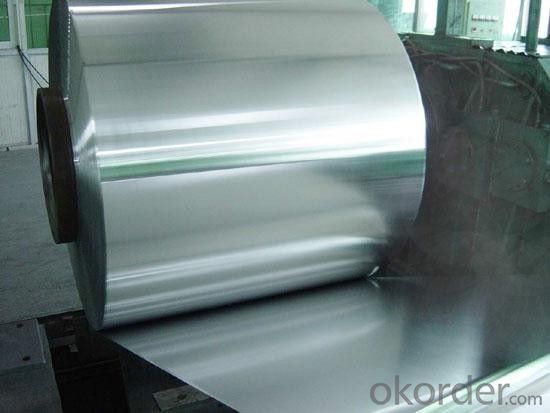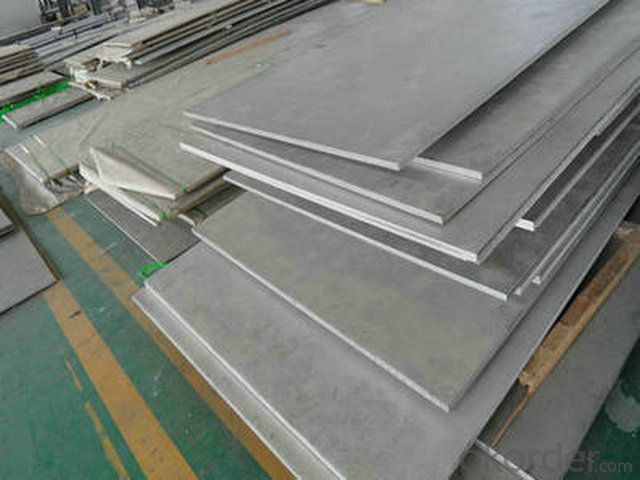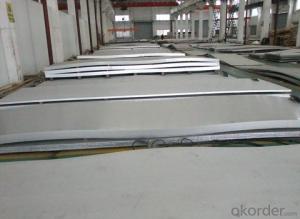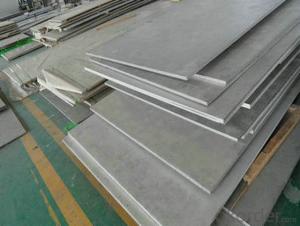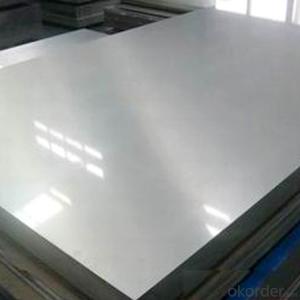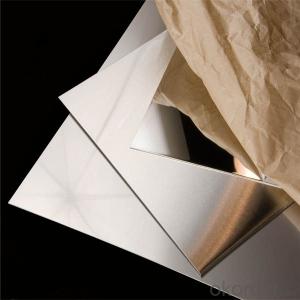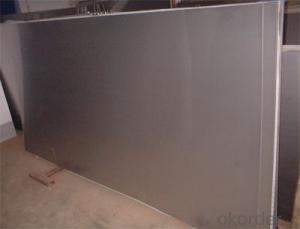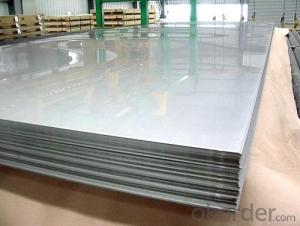Stainless Steel sheet 304 with Pvc Film Laminated
- Loading Port:
- Shanghai
- Payment Terms:
- TT OR LC
- Min Order Qty:
- 10000 m.t.
- Supply Capability:
- 5000000 m.t./month
OKorder Service Pledge
OKorder Financial Service
You Might Also Like
Hot sale stainless steel sheet 201/202/304/304l/316/316l/430 in china alibaba
Description of Stainless Steel Sheet:
Description | steel sheet,hot rolled steel sheet,cold rolled steel sheet, steel sheet,sheet,steel plate |
Standard | ASME, ASTM, EN ,BS,GB,DIN, JIS etc |
Application | Steel sheet applies to construction field, ships building industry, petroleum & chemical industries, war and electricity industries, food processing and medical industry, boiler heat exchanger, machinery and hardware fields. |
Packaging | Standard export sea-worthy packing |
Delivery time | 10-30 days |
Quality | No.1 |
Productivity | 500 tons/Day |
Note | Our company has cooperative relation between the domestic agents. Stainless steel sheet can be made accordingto the customers requirements. Fasten delivery. Quality assured. |
Contacts | If you have any question,please feel free contact me. |
Stainless steel sheet surface finish characteristics
Surface finish | Characteristics and application |
2B | The surface brightness and flatness of no2B is better than no2D. then through a special surface treatment to improve its mechanical properties,No2B could nearly satisfy comprehensive uses. |
No.1 | Polished with abrasive belt of grit#100-#200, have better brightness with discontinuous coarse stria, used as inner and external ornaments for building, electrical appliances and kitchen utensils etc. |
No.4 | Polished with abrasive belt of grit #150-#180,have better brightness with discontinuous coarse stria, but thinner than No3, are used as bathtub buildings inner and external ornaments electrical appliances kitchen utensils and food processing equipment etc. |
HL | Polished with abrasive belt of grit #150-#320 on the NO.4 finish and has continuous streaks, mainly used as buildings ornaments elevators, door of building, frontal plate etc. |
BA | Cold rolled, bright annealed and skin-passed, the product have excellent brightness and good reflexivity like mirror, kitchen apparatus, ornament etc. |
8K | The product have excellent brightness and prefer reflexivity can to be the mirror. |
Main Features of stainless steel sheet :
•Escalator, Elevator, Doors
•Furniture
•Production tools, Kitchen appliances, freezers, cold rooms
•Auto Parts
•Machinery and Packaging
•Equipment and Medical devices
•Transport system
Product Details:
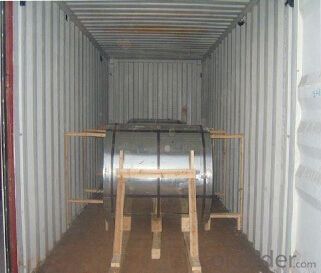
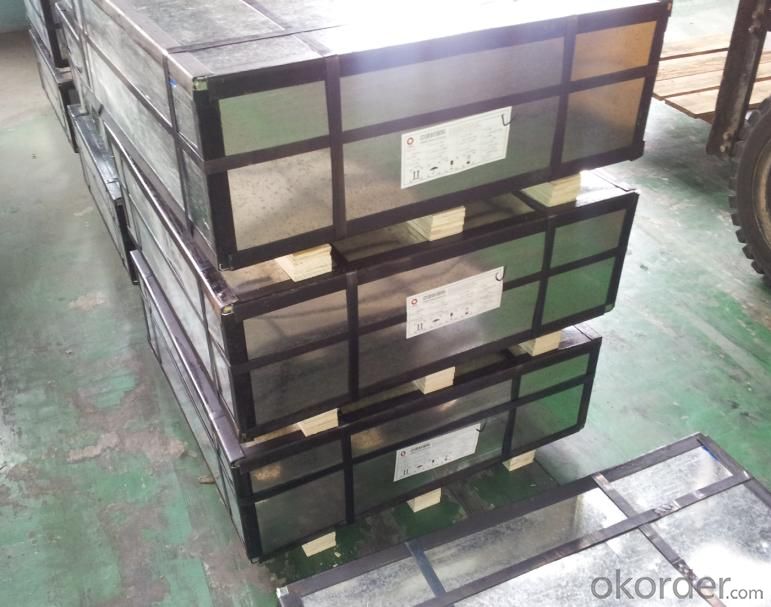
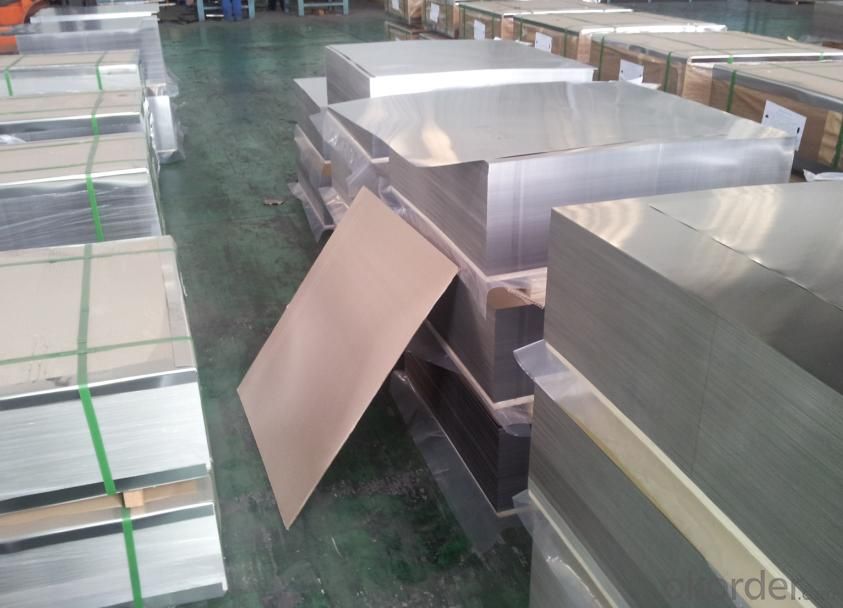
Sandard Seaworth Packing(wooden packing with water proof paper)
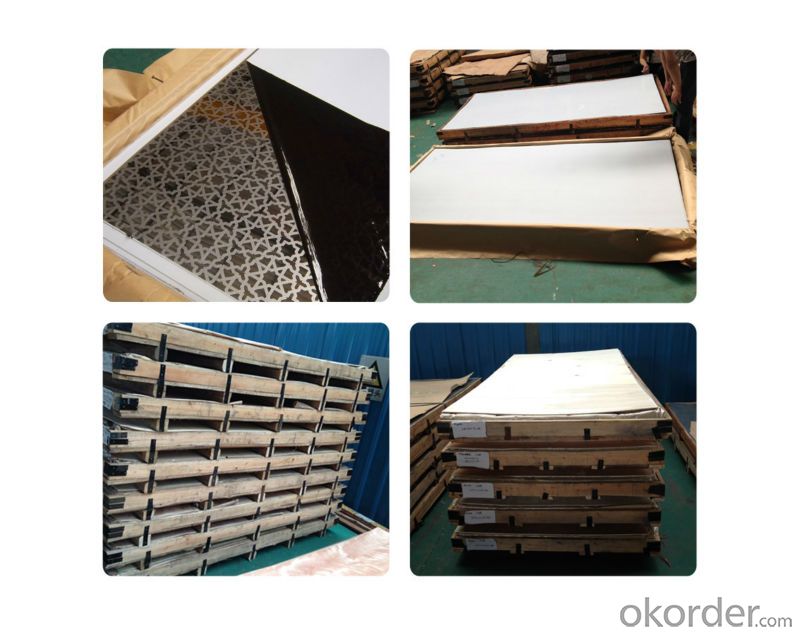
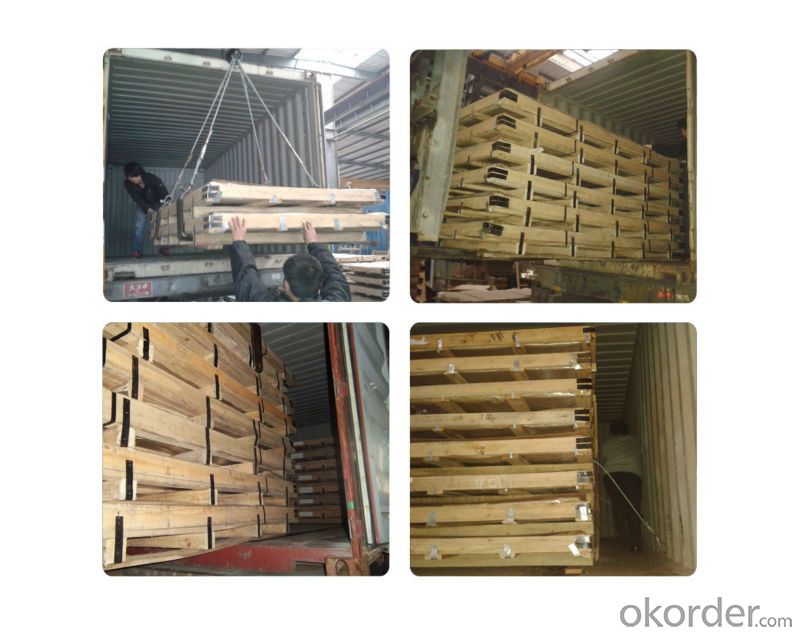
FAQ:
1. What's the quality?
very fine
2. How long get reply?
within 24 hours
If you have any question about stainless steel sheets,donot forget to sending the email to Us! You will get the competitive Price and have a very good experience about the Buying Process! CNBM International Corporation is always your trustful friend!
- Q: Can stainless steel sheets be used for sink fabrication?
- Yes, stainless steel sheets can be used for sink fabrication. Stainless steel is a durable and corrosion-resistant material that is commonly used for sinks due to its hygienic properties and ease of cleaning.
- Q: What are the benefits of using textured stainless steel sheets?
- There are several benefits to using textured stainless steel sheets. Firstly, the textured surface of these sheets provides enhanced visual appeal and aesthetic value. The unique patterns and textures on the stainless steel sheets can add depth and dimension to any space, making it more visually interesting and appealing. This makes them a popular choice for architectural and interior design projects. Secondly, textured stainless steel sheets offer improved durability and resistance to wear and tear. The textured surface helps to hide scratches, fingerprints, and other imperfections that may occur over time, making the sheets look cleaner and more polished for longer periods. This makes them ideal for high-traffic areas or applications where aesthetics and durability are equally important. Additionally, using textured stainless steel sheets can provide better grip and traction. The raised patterns on the surface of the sheets can create a non-slip surface, making them suitable for applications where slip resistance is crucial, such as flooring, stairs, or ramps. This enhanced grip can also be advantageous in industrial or commercial settings where safety is a priority. Moreover, textured stainless steel sheets are relatively low-maintenance. The textured surface is less prone to showing dirt or smudges, which means less frequent cleaning or maintenance is required. This makes them a convenient choice for applications in busy environments or areas where regular cleaning may be challenging. Lastly, textured stainless steel sheets are highly versatile and can be used in a wide range of applications. From architectural and interior design projects to industrial and commercial settings, these sheets can be employed in various ways. They can be used for wall cladding, columns, decorative panels, countertops, furniture, and much more, offering endless possibilities for creative and functional design solutions. In summary, the benefits of using textured stainless steel sheets include enhanced visual appeal, improved durability, better grip and traction, low-maintenance requirements, and versatility in application. These sheets offer a combination of practical and aesthetic advantages, making them a popular choice for a variety of projects in different industries.
- Q: Can stainless steel sheets be used for decorative ceiling tiles?
- Yes, stainless steel sheets can indeed be used for decorative ceiling tiles. Stainless steel is a versatile material that offers a modern and sleek appearance, making it a popular choice for decorative purposes. Its durability, resistance to corrosion, and ability to withstand high temperatures also make it suitable for ceiling applications. Additionally, stainless steel sheets can be easily customized with various finishes, patterns, and designs to create unique and visually appealing ceiling tiles.
- Q: Can stainless steel sheets be etched with designs?
- Indeed, designs can certainly be etched onto stainless steel sheets. Stainless steel, being a flexible material, offers the option of etching through different techniques like chemical etching or laser engraving. Chemical etching involves the application of a corrosive substance onto the stainless steel surface. This substance selectively eliminates the unprotected areas, leaving the desired design etched onto the sheet. On the other hand, laser engraving employs a high-powered laser beam to etch the design onto the stainless steel surface. Both methods yield intricate and detailed designs on stainless steel sheets, making it highly sought after for decorative and functional purposes in numerous industries.
- Q: Are stainless steel sheets suitable for laboratory equipment or instruments?
- Laboratory equipment and instruments benefit greatly from the use of stainless steel sheets. Their high suitability stems from stainless steel's exceptional resistance to corrosion, a critical feature in laboratory settings where exposure to various chemicals and substances occurs. Moreover, stainless steel exhibits remarkable heat resistance, rendering it fitting for applications involving high temperatures or sterilization procedures. Furthermore, stainless steel's ease of cleaning and maintenance plays a vital role in preserving a sterile and hygienic laboratory environment. The durability and strength of stainless steel contribute to its ability to withstand heavy usage and ensure long-lasting performance. Consequently, stainless steel sheets have gained a reputation as a dependable and widely preferred choice for laboratory equipment and instruments due to their corrosion resistance, heat resistance, cleanliness, and durability.
- Q: Can stainless steel plate spray paint?
- Spray (brush) primer, the role of primer, first, to prevent the oxidation of metal surface, and two is the top coat and metal firmly linked together. There are several kinds of primer. In the local paint shop a dozen could get answers.
- Q: What's the difference between 201 and 204 stainless steel plates? Thank you
- The price is different: 01 cheaper, 04 expensive. Toughness is different: 01 hardness, 04 toughness.
- Q: Can stainless steel sheets be used for food storage containers?
- Food storage containers can indeed be made from stainless steel sheets. Many people choose stainless steel for their food storage containers because it is durable, non-reactive, and resistant to corrosion. The stored food does not acquire any taste or odor, making it safe to store for extended periods. Moreover, stainless steel is easy to clean and maintain, ensuring optimal hygiene for food storage. Furthermore, stainless steel containers are often favored for their eco-friendly characteristics as they can be reused, thereby reducing the need for single-use plastic containers. In conclusion, stainless steel sheets are a dependable and appropriate option for food storage containers.
- Q: Are stainless steel sheets suitable for food processing and storage?
- Yes, stainless steel sheets are highly suitable for food processing and storage. This is due to their non-reactive nature, resistance to corrosion, durability, and ease of cleaning, making them ideal for maintaining food hygiene standards. Stainless steel is used extensively in commercial kitchens, food manufacturing facilities, and storage areas due to its ability to prevent contamination and ensure the safety of food products.
- Q: How do I determine the size and dimensions for stainless steel sheets?
- To determine the size and dimensions for stainless steel sheets, you need to consider the specific application and requirements. First, measure the area where the sheet will be installed or used, taking into account any necessary overlaps or allowances. Next, consider the thickness or gauge of the sheet that best suits your needs, as stainless steel sheets are available in various thicknesses. Additionally, consult with suppliers or manufacturers who can provide guidance based on your specific project requirements.
Send your message to us
Stainless Steel sheet 304 with Pvc Film Laminated
- Loading Port:
- Shanghai
- Payment Terms:
- TT OR LC
- Min Order Qty:
- 10000 m.t.
- Supply Capability:
- 5000000 m.t./month
OKorder Service Pledge
OKorder Financial Service
Similar products
Hot products
Hot Searches
Related keywords
